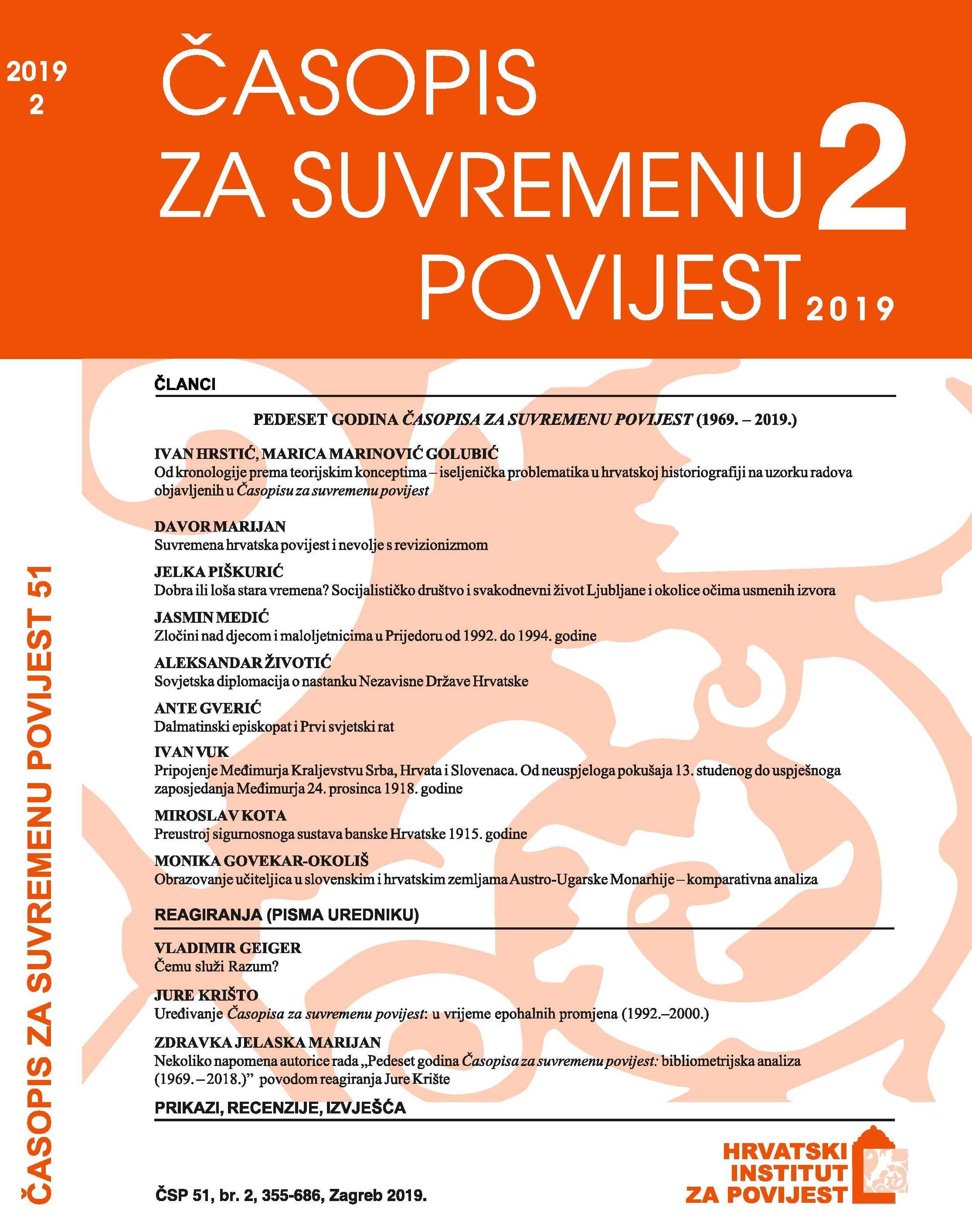Obrazovanje učiteljica u slovenskim i hrvatskim zemljama Austro-Ugarske Monarhije – komparativna analiza
Women’s Teacher Education within Slovenian and Croatian Regions of Austria-Hungary - comparative analysis
Author(s): Monika Govekar-OkolišSubject(s): History of Education, 19th Century, Pre-WW I & WW I (1900 -1919)
Published by: Hrvatski institut za povijest
Keywords: Austria-Hungary; women’s teacher education; women’s school legislation; women’s teacher training colleges; Slovenian and Croatian lands;
Summary/Abstract: This article is the first comparative study on the education of primary college women teachers in Slovenian and Croatian lands of Austria-Hungary through legislation and the organisation of women’s teacher training colleges. The study consists of a historical comparative analysis covering the period from the emergence of the dualist Austria-Hungary (1867) until World War I (1914). During the period covered in this article, many changes were implemented in women’s teacher education. Before the year 1869, women who wanted to become teachers acquired the necessary knowledge as nuns in monasteries, in private girls’ schools, or at home. The Austrian school legislation of 1869 had a quantitative and qualitative influence on the development and organisation of women’s teacher training colleges and on the quality of women’s teacher education. Women teachers became state employees. Analysis of the legislation showed differences between the syllabuses of women’s teacher training colleges in Slovenian and Croatian lands. The syllabuses were adapted to the requirements of individual lands. A comparison of their activities also shows differences in development, number, and organisation. New state women’s teacher training colleges and private ones with public accreditation appeared. In Slovenian lands, under the Austrian school legislation, the development of four-year women’s teacher training colleges was somewhat faster than in Croatian lands. The comparison shows that private women’s teacher training colleges were predominant and women’s teacher education became more standardised and professionalised both in Slovenian and Croatian lands.
Journal: Časopis za suvremenu povijest
- Issue Year: 51/2019
- Issue No: 2
- Page Range: 567-590
- Page Count: 24
- Language: English, Croatian

